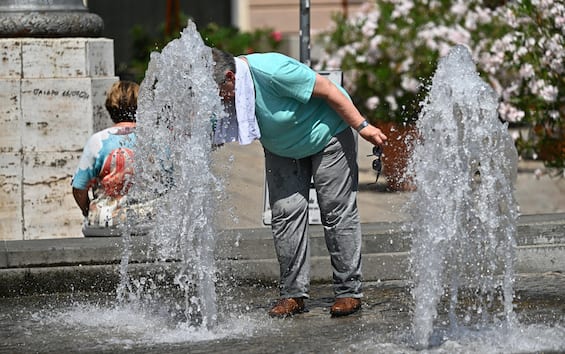Italy is heading towards a future made of scorching and increasingly long summers, even up to 5 or 6 months: this is one of the most worrying data that emerges from the first Report on the Climate of the 21st century now in its third edition. The report was produced by iLMeteo.it and Corriere della Sera and represents a sort of spin-off of the Climate Liverity Index. The report is based on 185 million climate data for all 108 provincial capitals.
Climate has changed in Italy since 1985 and also offers a look at the future, deepening the increasingly prominent role that will play the ongoing climate crisis.
“Climate change is increasingly taking direct consequences on our lives and activities,” says Lorenzo Tedici, meteorologist and media manager of iLMeteo.it. "Italy, and the Mediterranean in general - continues Tedici - are a climatic hotspot where global warming runs at double speeds compared to the rest of the world. Warmer yes, but also more extreme weather events such as droughts, floods and hailstorms.”
On a general level, there are increasingly higher monthly average temperatures: extreme heat days, with temperatures above 35 degrees, have gone from 10 to 26 in Florence and from 1 to 7 in Bolzano. The record is Caltanissetta, which records 27 days of extreme heat more than in the 80s.
The heat leaves no escape even at night, as evidenced by the data on tropical nights: Bergamo is the city where they have increased the most, from 8 to 62, in Milan they have gone from 20 to 71 and in Rome from 51 to 90: it means three months with minimum temperatures that never drop below 20 degrees.
And even the forecasts of the next few days do not deviate from this trend. The high pressure will remain on our country until at least August 10 with high temperatures and the return of the African heat.
And the worst situation, Tedici points out, will affect extreme drought, especially in the south. “In the last month - he observes - the picture has worsened further also in Calabria, while for now 12 months the drought is ‘severe’ in Sicily with numerous basins literally dried up by the African heat and the absence of rain”.
Precisely the rains will be the sore note of the next 10-14 days: "Europe, in fact - adds Tedici - will be divided in two with the Atlantic cyclones and the precipitation in transit at the high latitudes while, on the rest of the continent, we will have rain with the dropper.
In particular, until August 7, weather models indicate a accumulation of blue gold (water) up to 200 liters per square meter (200 mm) in the inland areas of Sweden, only 7 liters per square meter in Sicily and in general on our South. A fact, the latter, notes the meteorologist, “which with temperatures up to 40 degrees C means ‘zero’ in the hydrological budget: this small amount of rain will evaporate or not touch the ground”.
Man, I wish we could get a 5 or 6 month summer here instead of our usual 2 months.


